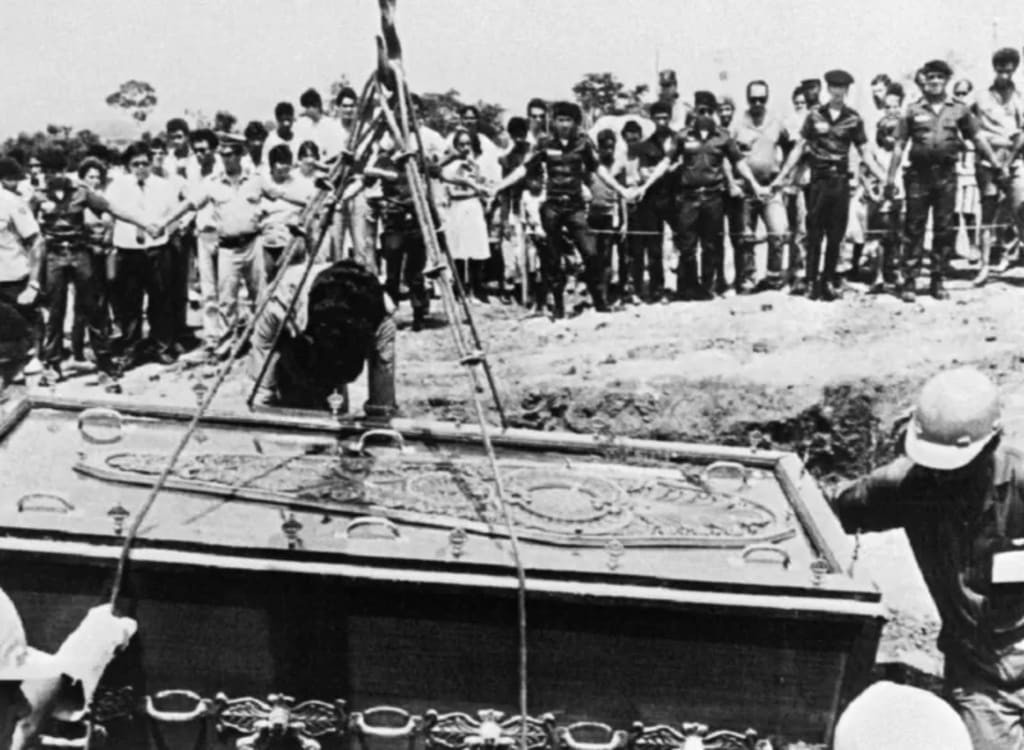The forgotten history of Mexican Chernobyl
how the biggest nuclear incident in american history happened

Two years before the Chernobyl catastrophe occurred, the largest nuclear accident on the American continent took place in Mexico. The tragedy known as the Cobalt-60 incident in Ciudad Juarez (in the north of the country) originated in a warehouse of the private hospital Centro Medico de Especialidades. This event is reminiscent of the Goiania accident in Brazil, with similar characteristics. "The Juarez accident was the largest in America due to the area affected and the waste generated," Epifanio Cruz Zaragoza, from the UNAM Nuclear Science Center, explained to Verne in an interview.
In 1977 and without the necessary permits, Dr. Abelardo Lemus and his partners at the private hospital bought a radiotherapy machine equipped with a Cobalt-60 pump for 16,000 dollars. Cobalt-60 is a synthetic radioactive isotope that emits gamma rays used to treat cancer patients.
Due to lack of personnel, the machine was abandoned in a warehouse for six years, until on December 6, 1983, Vicente Sotelo Alardín, a maintenance worker at the hospital, and his friend Ricardo Hernández, decided to sell it for scrap.
The two men dismantled the 100-kilogram metal frame and drilled out the heart of the cobalt bomb, a cylinder containing the radioactive material (6,000 1 mm diameter pellets). Once the machine was stripped, Vicente and Ricardo loaded it into a pickup truck and took it to Yonke Fénix, a scrap metal yard where they were paid 1,500 pesos. On the way to the junkyard, the truck was scattering the radioactive material all over the city. This information was detailed in the report later made by the Nuclear Safety and Safeguards Commission (CNSNS).
The cobalt-60 was mixed with the rest of the scrap from Yonke Fénix and sold to several foundries in the area. Among them, Aceros de Chihuahua S.A. (Achisa) and the maquiladora Falcón de Juárez S.A., who used the radioactive metal to manufacture table bases and corrugated steel rods, widely used in building construction. All this material, some 6,000 tons, was distributed to more than half of the country's states and exported to the United States.
Discovery by chance
On January 16, 1984, a truck carrying Mexican rebar in New Mexico (United States) set off the radiation detector at the Los Alamos nuclear laboratory, the same one where the first atomic bomb was created.
The Texas Department of Health and the Nuclear Regulatory Commission alerted Mexico of the contamination and ten days later, they found one of the main sources of radiation, Sotelo's truck, parked in the Altavista neighborhood of Ciudad Juarez, one of the poorest neighborhoods in the area. The quartermaster's truck was parked in front of his house for several months because its battery was stolen, so it became a spot where children played and people stopped to socialize, receiving high doses of radiation, as The New York Times reported on May 1, 1984.
It is estimated that neighbors near the vehicle and workers at companies that purchased the metal were hit with ten times more radiation than the 1979 Three Mile Island incident in Pennsylvania, until then the largest nuclear catastrophe in the United States. The New York Times, citing U.S. authorities, reported that 100 times more radiation was released in Ciudad Juarez than in Pennsylvania. Meters detected that the van was spewing in some parts almost 1000 rads, the radiation equivalent to 20,000 X-rays.
The medical center tried to blame Sotelo. "I am a victim of the problem," the maintenance worker told Proceso magazine in September 1984. "The fierros (irons) were given to me by the head of maintenance. He told me: 'There are those irons, take them with you so you can get them for the sodas. The 35-year-old worker said that the hospital director and the administrator threatened him and forced him to sign a statement saying that he had stolen the machine. "They never warned us that that machine had contamination. The truth, not a single sign with a skull or anything like that," he explained.
Some of those affected
Some of those affected and Vicente's poor neighbors told Proceso that they stopped going to the hospital for check-ups because they could not afford to pay for medicine and transportation. According to the doctor from the Nuclear Science Center, it is very difficult to calculate how many victims there were in the long term given the exposure to radiation and the amount of radioactivity. It is estimated that approximately 1,000 tons of rebar were never recovered, which could be used to build about 300 average-sized houses.
At least 23 people, workers at Yonke Phoenix suffered oligospermia (low sperm count in semen) and azoospermia (inadequate sperm production) after being in contact with radiation. The person who helped transport the source to the factory suffered burns on his hands and three other workers presented leukopenia (low level of white blood cells), adds the UNAM researcher. The authorities followed up on 10 cases of people who had been in contact with the contamination, from which they concluded that there was no severe short-term damage, but that future biological problems could not be ruled out.
How much radiation is dangerous?
That is considered high and in a one-hour full-body exposure the person can die. But if the driver and passenger were in the cabin during the transport of the source they should have received an exposure of approximately 4.7 R/h which could have caused vomiting within hours and reddening of the skin within a week, Dr. Epifanio Cruz, from UNAM, tells BBC Mundo.
Since it was a densely populated area, it was considered urgent to take the contaminated truck to a site that met the characteristics of not being populated or too distant, says the CNSNS report.
The maneuver was carefully planned and executed in 10 minutes. The vehicle was taken to the El Chamizal park, on one side of the border with the United States.
Material taken from Ciudad Juarez
Natural degradation of cobalt-60 caused the radiation source to go from 3,000 curie (Ci) in 1977 to 450 Ci by February 1984.
"With less than 500 there can be an effect, but not much. It depends on the time of exposure. That's why the damage to the population was very low," explains Espinosa.
In addition to Yonke Fénix and Achisa, the CNSNS investigation detected that three companies that sold ferrous materials in the cities of Monterrey, Gómez Palacio and San Luis Potosí registered contamination.
There were even traces of radioactive material on a highway linking Ciudad Juarez and Chihuahua. Everything required a careful task of detecting and securing granules and contaminated objects.
In total, 6,600 tons of rod and 3,000 metal table bases were contaminated.
The rebar was marketed in 17 of Mexico's 32 states. Of 17,600 inspected constructions, 814 had to be demolished, according to the report.
4,000 people exposed
The research indicates that about 4,000 people were "exposed to radiation" of which 80% received doses of less than 500 mrem.
That is equivalent to what a person can receive if he or she is near a patient who received radiation treatment.
Another 18% received between 0.5 and 25 rems, while 2%, or about 80 people, were exposed to more than 25 rems. Of all, five people were exposed to doses between 300 and 700 rems over a two-month period, according to CNSNS.
"For the five people exposed to doses between 300 and 700 rem, it was more than enough to affect gonads, thyroid glands and superficial bones for example in hands and feet, shortening quality of life," explains Dr. Cruz.
The effect of these doses can lead to damage to the hereditary genetic material for at least two generations, causing sterility and lack of spermatozoa in the exposed person, which can be recovered after at least five years, he adds.
The radioactive "graveyard
Finding a place to put the radioactive material was the next problem to be solved: it had to be in a place away from the population, with little rain, no contact with water sources and with the least risk of contamination to the environment.
They took the radioactive material back and forth for almost a year in trucks to see where to bury it. It was a total mess, recalls Espinosa.
After multiple unsuccessful attempts to secure a piece of land, due to opposition from local residents and authorities, the Mexican government carried out an excavation in a desert area south of Ciudad Juarez called "La Pedrera".
The rods and other materials made with contaminated iron, as well as Sotelo Aldarín's truck, were taken there. Everything was buried in concrete to neutralize its harmful effect.
However, local and national press reports have shown that this "cemetery" of radioactive waste, which should have been protected, has been abandoned.
About the Creator
diego michel
I am a writer and I love writing






Comments
There are no comments for this story
Be the first to respond and start the conversation.